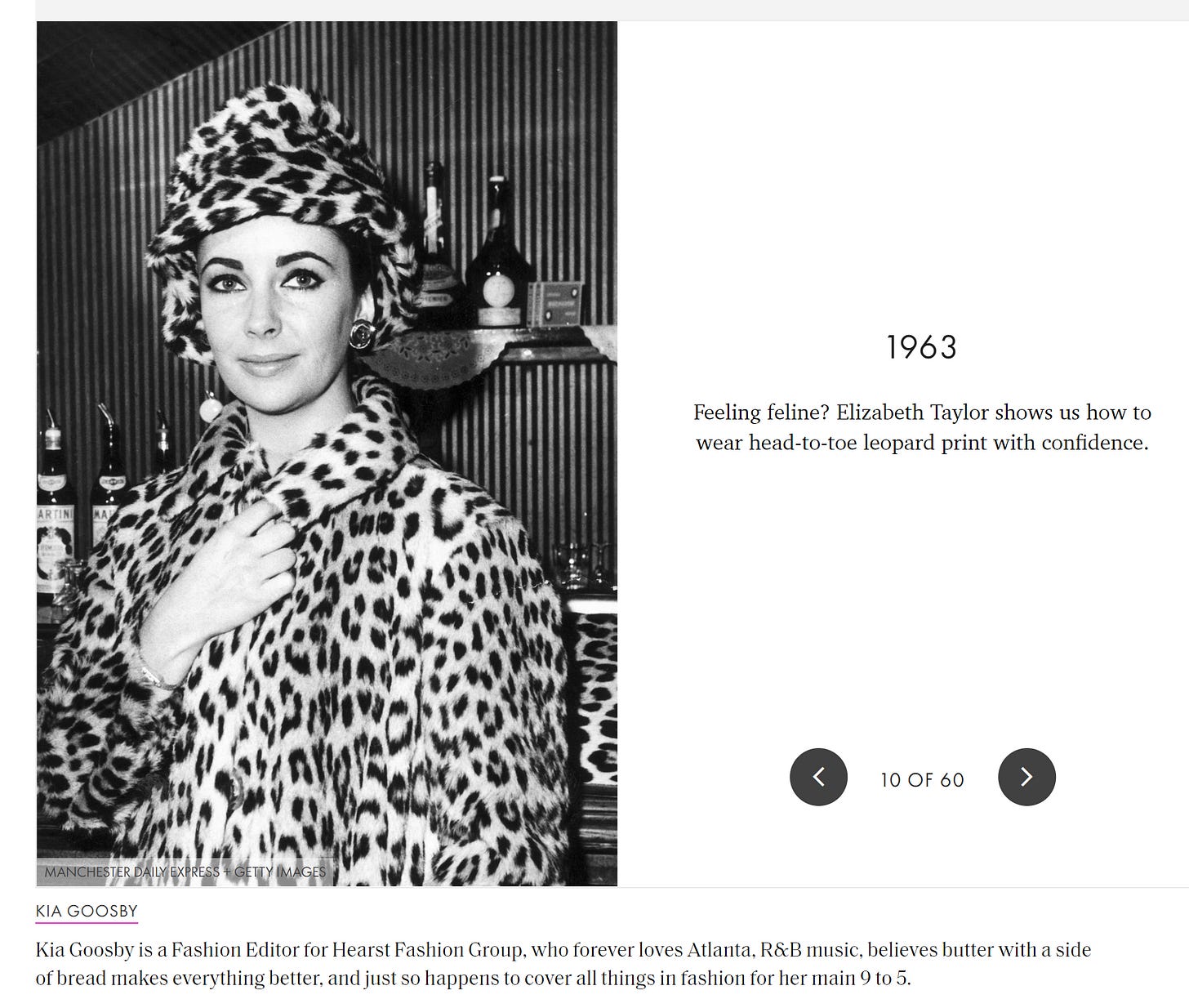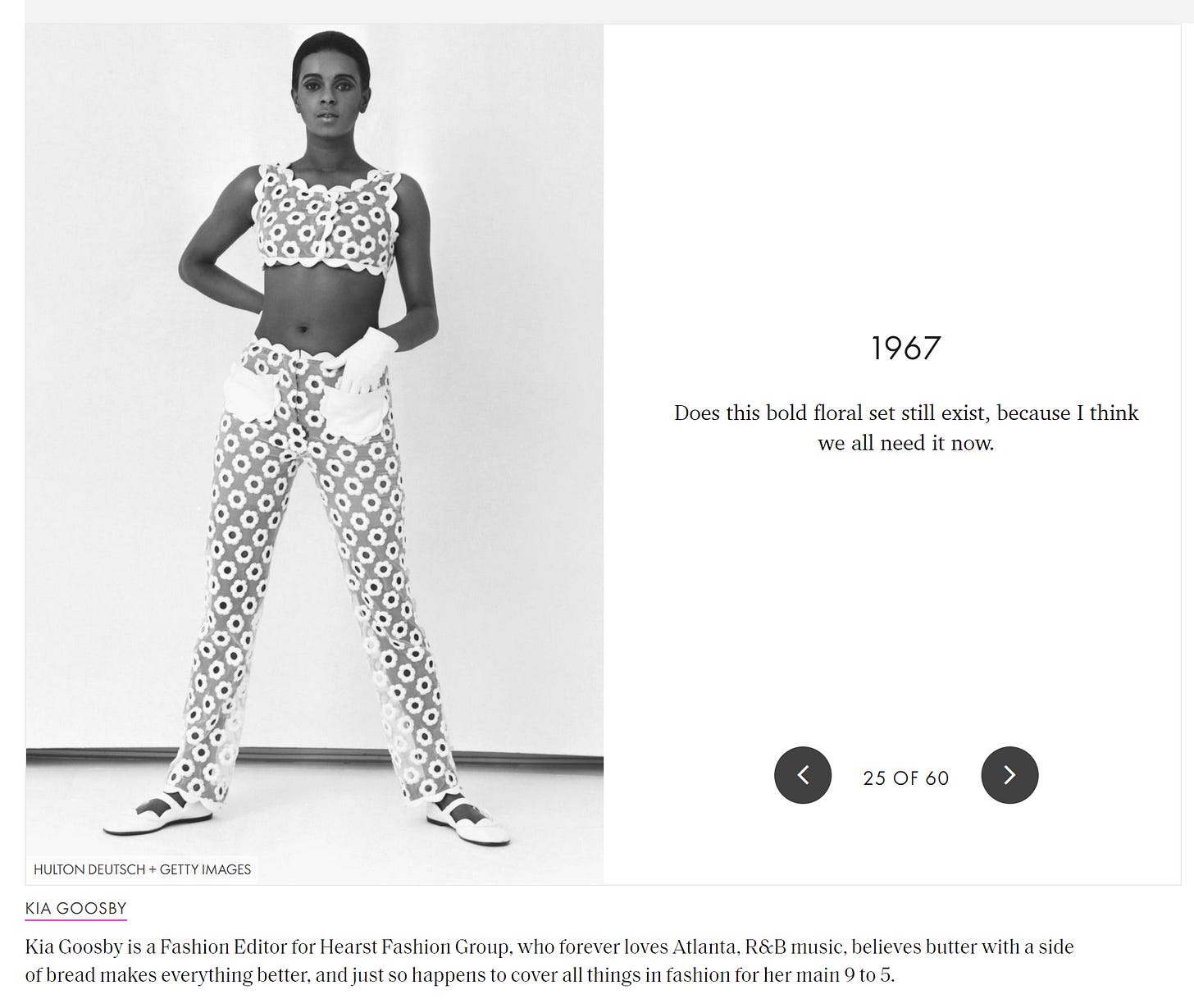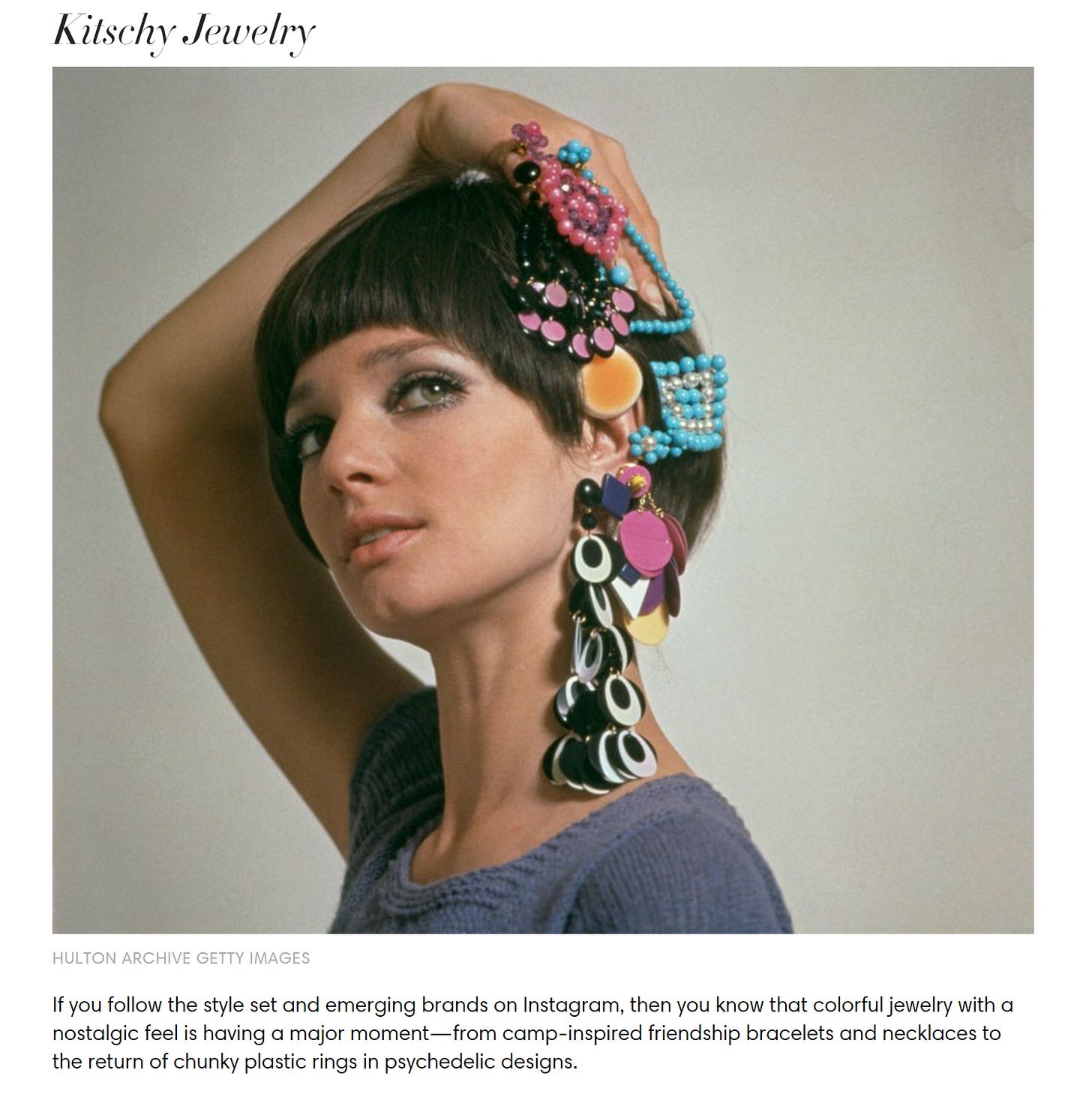Ariana Grande: Our '60s Loving Saving Grace
TGIF #1 by Venus in Cat Eyes Features Youthquake Love Letter #3
Youthquake is a nostalgic biweekly newsletter of the pop culture elite (past & present).
Friday’s TGIF Post varies from New Music Friday releases, Retro Fixation, film reviews, The Audio Files, and so much more in pop culture adjacency. This week, we’re bringing back an old favorite, Youthquake’s Love Letters.
Make sure to catch up with our previous Love Letters, like An Ode to the Blockbuster Experience and Sofia Coppola’s The Virgin Suicides. We’re happy to have you; get into it below.

While Naomi is on a much-needed writing break, I’ll be taking over the TGIF post for today. Before I dive into today’s topic, I wanted to introduce myself formally.
Hello! My name is Sam, AKA Venus In Cat Eyes. I’m happy to be here, and I’m honored to be taking on the TGIF spot for this week!
This week, my love letter was an ode to pop icon Ariana Grande and her obvious love for retro fashion and oldies music. Not only is Ariana inspired through clothing and hairstyles by the period (her high ponytail is a staple for the singer), but also sprinkled in almost her entire discography as well. You can read more about it here (link).
What I wanted to talk about today was that very inspiration that inspired Ariana and inspired me in my youth, to now. First, I want to talk about the article of clothing that I want to say started it all for young women to embrace their empowerment and live their lives freely, embrace their sexuality, and rebel against societal norms; that’s the power of the mini skirt.
The mini skirt was a symbol of rebellion and empowerment in the 1960s. According to BBC, it’s unclear who exactly invented the mini skirt, but Mary Quant was well known for starting the trend in the sixties. The 60s itself is known as a time of rebellion, counter-culture, and peace and love, and these values truly showed in everything the people from that time did, even as little as hitching a skirt a few inches higher was effective in taking a stand.
Another trend of the sixties that I adopted in my youth into adulthood is the cat-winged eyeliner makeup trend. When I first was getting into the Beatles, the Monkees, David Bowie, and more, I not only wanted to immerse myself into this beautiful time before me, but I wanted to live and dress accordingly, too. I looked up popular makeup trends from the 60s to wear to school, and lo and behold, I discovered the iconic cat eyes makeup.
Although the cat-eye dates back to Ancient Egypt, it resurfaced and dominated back in the 1960s during the mod scene with models like Samantha Juste, Jean Shrimpton, Veruschka, Catherine Deneuve, and Pattie Boyd. (Bonus, Taylor Swift even interviewed Pattie Boyd for a terrific article in Harpers Bazaar). The trend is still here today with many stars like Ariana Grande, Taylor Swift, Alexa Demie, and so much more.
There are many reasons why I love the 60s, not only for the historic events but also because it was certainly a revolution of its own— a revolution on societal norms and expectations, a fashion revolution, a sexual revolution, and liberation. The effects of the 60s trends and styles are still here today and influence the likes of Ariana Grande.

While I was busy creating the vintage wardrobe of my dreams in high school (and even middle school), my friends at the time were busy raising an eyebrow at me as they were searching for their perfect version of Nikes. Instead of hanging up posters of the then teen idol Justin Bieber, I was desperately trying to find HD pictures of Davy Jones to hang up on my bedroom wall.
I’ve got a bone to pick with the current generation that’s now decided vintage is cool with their gentrification, like vintagecon that are on the rise on TikTok and Instagram. Some of us were ahead of the game, okay? Flippant a bit, but it wasn’t for the perfect Instagram picture or a TikTok to go viral; many of us thrifted because of financial means or genuine love for the past. Being in the classic rock/vintage “community” back then spent hours trying to find cute sustainable vintage clothes and first editions of our favorite albums because we wanted to recreate the ‘60s and ‘70s revolution within our lives. However, I'm referring to the aesthetic without romanticizing the era because of the severity of political issues. Pop culture and the culture of the ‘60s that we’re trying to embody and embrace; it looks like it’s happening all over again, with vintage-loving pioneers like Ariana Grande.
One of the things that first drew me to AG when she was first coming onto the scene was how everything she did, whether it was a new photoshoot or cover for an album, she always had some vintage flair. Put Your Hearts Up; classic pin-ups inspired her first single (though a lot less risqué).
Ariana pays homage to legends and greats before her, covering older songs like Gimme Some Lovin by the Spencer Davis Group. It was shocking to see an on-the-rise singer/celebrity show their love for old things like I was doing at the time (I was around 12 or 13). She also did a cover of ABC by the Jackson 5 as a tribute to Michael Jackson, and when Davy Jones of The Monkees passed away, she tweeted about him in remembrance (WHICH GOT ME).
2013’s Yours Truly’s opening track, Honeymoon Avenue, is inspired by ‘50s styled ballads and doo-wops; the inspiration doesn’t stop and hasn’t stopped there.
Her second album, My Everything, had the single hit Problem with an Iggy Azaela feature and an accompanying music video that looked like it was straight out of American Bandstand. From the tall white go-go boots to the short dresses and 60s inspired psychedelic art— be still have my heart, I was OBSESSED with this music video and song, and I still am. Mostly because Ariana’s aesthetically consistent with retro-inspired themes weaving in almost everything she does.
Like Dangerous Woman’s opening track, Moonlight is arguably one of her best songs ever with its doo-wop inspiration. On her fourth album, Sweetener, the intro song raindrops (an angel cried) is a cover of An Angel Cried by Frankie Valli and the Four Seasons.
Although this is a reach, I want to include the thank u, next ballad needy since I’d say it’s the closest song on that album that is mildly inspired by old music and classics. The song’s end is what seals the deal, an outro of harps and strings that sound similar to the ones in Moonlight; Ariana Grande truly is the modern-day retro queen that keeps on giving.
Finally, positions; the songs that are heavily retro-influenced are my hair and love language. Whenever I listen to my hair, I feel like I’m sitting in a dainty jazz bar with very low lighting, cigar smoke, and alcohol sticking to the floor, and suddenly this undiscovered singer gets on stage and sings this song. With love language, the violins make this song sound so classy and oldies-like. Visually, the music video for 34+35 was cinematically retro-inspired, a la the Austin Powers movies.
Besides Ariana including retro-inspired influences in her music, she also pays homage to the sixties with her iconic flip-pony tail that has become her signature look. There truly are no words other than ‘iconic’ to describe her look.
I’ve always appreciated Ariana Grande for all these reasons: keeping the 60s alive in her looks, her music, including classics in her discography, and doing it like no other pop star does.
🔗 Additionally, I’d love to include some ‘60s inspired looks that we’re enamored with below.
Ari’s Position’s makeup ignited on TikTok; here are our favorites by Jasadetunji, danielaandrea, and chloeandcos.
Euphoria’s Emmy Award-winning makeup artist Kirsten Sage Cole’s looks on Maddy’s Alexa Demie. Kirsten also famously did the fantastic geometric makeup on Diosa Tessa Thompson on Sorry to Bother You.
Overall, I could go on and on about every aspect the 60s had to offer; for now, I’ll leave it at this: as one of the most influential decades of our time, the ‘60s remain alive in bits and pieces in modern culture today. It’s up to us and trail-blazing artists (that give homage to those before us while moving forward) to uphold the core values of liberating movements.















